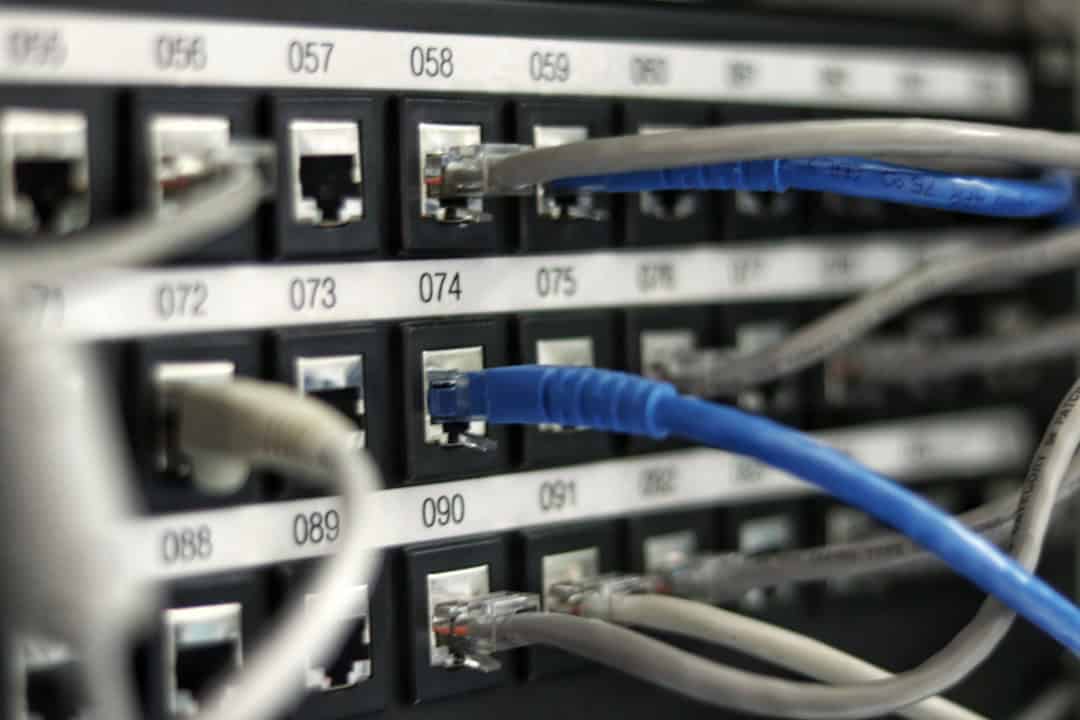In today’s digital age, network and cloud security are of paramount importance for businesses of all sizes. With the increasing reliance on technology and the internet, the risk of cyber threats and attacks has also grown exponentially. It is crucial for organizations to understand the significance of securing their networks and cloud infrastructure to protect sensitive data, maintain customer trust, and ensure business continuity.
Network security involves implementing measures to prevent unauthorized access, misuse, modification, or denial of a computer network and its resources. On the other hand, cloud security focuses on protecting data, applications, and infrastructure in the cloud environment from cyber threats. Both network and cloud security are essential for safeguarding critical business information and maintaining a secure digital ecosystem.
Furthermore, network and cloud security play a vital role in regulatory compliance and risk management. Many industries are subject to strict regulations regarding the protection of sensitive data, such as healthcare (HIPAA), finance (PCI DSS), and government (FISMA). Failure to comply with these regulations can result in severe penalties and reputational damage.
By prioritizing network and cloud security, organizations can demonstrate their commitment to compliance and risk mitigation. Additionally, a robust security posture can enhance customer confidence and trust, leading to a competitive advantage in the marketplace. Overall, understanding the importance of network and cloud security is essential for businesses to thrive in today’s digital landscape.
Key Takeaways
- Network and cloud security are crucial for protecting sensitive data and preventing unauthorized access.
- Strong authentication and access control measures help ensure that only authorized individuals can access sensitive information.
- Encryption is a powerful tool for safeguarding data, making it unreadable to unauthorized users.
- Regular monitoring and updating of security protocols are essential for staying ahead of potential threats and vulnerabilities.
- Firewalls and intrusion detection systems are important components of a comprehensive security strategy, helping to prevent and detect unauthorized access and attacks.
- Educating employees on security best practices is vital for creating a culture of security awareness and responsibility.
- Partnering with reliable security providers and consultants can provide valuable expertise and support in implementing and maintaining effective security measures.
Implementing Strong Authentication and Access Control Measures
One of the fundamental aspects of network and cloud security is implementing strong authentication and access control measures. Authentication is the process of verifying the identity of a user or system, while access control involves regulating who can access specific resources or perform certain actions within a network or cloud environment. Strong authentication mechanisms, such as multi-factor authentication (MFA) and biometric authentication, add an extra layer of security by requiring users to provide multiple forms of verification before granting access.
This significantly reduces the risk of unauthorized access and helps prevent potential security breaches. In addition to strong authentication, access control measures, such as role-based access control (RBAC) and least privilege principle, are essential for limiting the exposure of sensitive data and resources to only authorized individuals. RBAC assigns permissions to users based on their roles within an organization, ensuring that they have access only to the resources necessary for their job functions.
Similarly, the least privilege principle restricts user access rights to the bare minimum required to perform their tasks, minimizing the potential impact of a security breach. By implementing these robust authentication and access control measures, organizations can effectively mitigate the risk of unauthorized access and enhance overall network and cloud security.
Utilizing Encryption to Safeguard Data

Encryption is a critical component of network and cloud security that helps safeguard sensitive data from unauthorized access or interception. It involves encoding information in such a way that only authorized parties can access and decipher it, thereby protecting it from cyber threats during transmission or storage. Utilizing encryption for data at rest (stored data) and data in transit (transmitted data) is essential for maintaining the confidentiality and integrity of information within a network or cloud environment.
By encrypting data, organizations can ensure that even if it falls into the wrong hands, it remains unreadable and unusable. Furthermore, encryption is particularly crucial for securing data stored in the cloud, where information is often distributed across multiple servers and locations. Cloud providers typically offer encryption capabilities to protect data at rest, but organizations should also consider implementing additional encryption measures for an added layer of security.
Additionally, encrypting data in transit using secure communication protocols such as SSL/TLS helps prevent eavesdropping and man-in-the-middle attacks. Overall, utilizing encryption to safeguard data is a fundamental practice for enhancing network and cloud security and mitigating the risk of unauthorized access or data breaches.
Regularly Monitoring and Updating Security Protocols
| Metrics | Targets | Actual |
|---|---|---|
| Number of security protocol updates per month | 4 | 5 |
| Percentage of systems regularly monitored | 95% | 98% |
| Number of security incidents detected | Less than 5 | 3 |
Regular monitoring and updating of security protocols are essential for maintaining a strong network and cloud security posture. Cyber threats are constantly evolving, making it crucial for organizations to stay vigilant and proactive in identifying potential vulnerabilities or breaches within their systems. By implementing robust monitoring tools and practices, such as intrusion detection systems (IDS) and security information and event management (SIEM) solutions, organizations can continuously monitor their networks and cloud environments for any suspicious activities or anomalies.
Moreover, staying up-to-date with security patches, software updates, and best practices is crucial for addressing newly discovered vulnerabilities and mitigating potential risks. Outdated or unpatched systems are often targeted by cybercriminals seeking to exploit known vulnerabilities for malicious purposes. Therefore, organizations should establish a comprehensive patch management process to ensure that all systems and software are regularly updated with the latest security patches and fixes.
Additionally, conducting regular security audits and assessments can help identify areas for improvement and ensure that security protocols align with industry standards and best practices. Overall, regularly monitoring and updating security protocols is essential for proactively addressing potential threats and maintaining a robust network and cloud security posture.
Employing Firewalls and Intrusion Detection Systems
Employing firewalls and intrusion detection systems (IDS) is crucial for bolstering network and cloud security by establishing barriers against unauthorized access and detecting potential security breaches. Firewalls act as a barrier between a trusted internal network and untrusted external networks, filtering incoming and outgoing traffic based on predetermined security rules. They help prevent unauthorized access to sensitive data and resources by blocking malicious traffic and unauthorized connections.
Additionally, firewalls can be deployed at various points within a network architecture to create multiple layers of defense, known as defense-in-depth, further enhancing overall security. Intrusion detection systems (IDS) complement firewalls by actively monitoring network traffic for signs of potential security threats or unauthorized activities. IDS can detect anomalies or patterns indicative of a security breach, such as unusual traffic patterns or known attack signatures, triggering alerts for further investigation or action.
Furthermore, organizations can leverage intrusion prevention systems (IPS) that not only detect but also actively block potential threats based on predefined rules or behavioral analysis. By employing firewalls and intrusion detection systems, organizations can establish a robust defense mechanism against cyber threats and unauthorized access within their network and cloud environments.
Educating Employees on Security Best Practices

Educating employees on security best practices is crucial for creating a culture of cybersecurity awareness within an organization. Human error remains one of the leading causes of security breaches, making it essential for employees at all levels to understand their role in maintaining network and cloud security. Training programs should cover topics such as password hygiene, phishing awareness, social engineering tactics, data handling best practices, and incident reporting procedures.
By empowering employees with the knowledge and skills to recognize potential security threats and adhere to best practices, organizations can significantly reduce the risk of human-related security incidents. Furthermore, fostering a culture of Cybersecurity awareness encourages employees to take an active role in protecting sensitive information and reporting any suspicious activities or potential breaches promptly. Regular security awareness training sessions, simulated phishing exercises, and ongoing communication about emerging threats can help reinforce the importance of cybersecurity within the organization.
Additionally, organizations should establish clear policies and guidelines regarding acceptable use of technology resources, data protection requirements, and incident response procedures to provide employees with a framework for adhering to security best practices. Overall, educating employees on security best practices is essential for building a resilient defense against cyber threats within an organization.
Partnering with Reliable Security Providers and Consultants
Partnering with reliable security providers and consultants can provide organizations with the expertise and resources needed to enhance their network and cloud security posture. Security providers offer a wide range of solutions, including managed security services, threat intelligence, incident response support, and security assessments, tailored to meet the specific needs of an organization. By leveraging the specialized knowledge and experience of security providers, organizations can gain valuable insights into emerging threats, industry best practices, and effective security strategies.
Additionally, engaging with experienced security consultants can help organizations assess their current security posture, identify areas for improvement, and develop a comprehensive security roadmap aligned with their business objectives. Consultants can offer guidance on implementing industry-standard frameworks such as NIST Cybersecurity Framework or ISO 27001 to establish a robust security governance structure. Furthermore, they can assist in conducting risk assessments, developing incident response plans, and ensuring regulatory compliance to mitigate potential legal or financial repercussions.
By partnering with reliable security providers and consultants, organizations can strengthen their network and cloud security capabilities while focusing on their core business operations. In conclusion, network and cloud security are critical components of modern business operations that require careful attention and proactive measures to mitigate potential risks effectively. By understanding the importance of network and cloud security, implementing strong authentication and access control measures, utilizing encryption to safeguard data, regularly monitoring and updating security protocols, employing firewalls and intrusion detection systems, educating employees on security best practices, and partnering with reliable security providers and consultants, organizations can establish a robust defense against cyber threats while maintaining the confidentiality, integrity, and availability of their critical assets.
Prioritizing network and cloud security is not only essential for regulatory compliance but also for building customer trust, maintaining business continuity, and gaining a competitive edge in today’s digital landscape.
If you’re interested in learning more about network and cloud security, you may want to check out this article on resources and further reading on conferences and events. This article provides valuable insights and information on the latest developments and best practices in the field of network and cloud security. It’s a great resource for anyone looking to stay up-to-date on the latest trends and advancements in this important area of technology.
FAQs
What is network and cloud security?
Network and cloud security refers to the measures and practices put in place to protect the integrity, confidentiality, and availability of data and resources within a network and cloud environment. This includes safeguarding against unauthorized access, data breaches, and other cyber threats.
Why is network and cloud security important?
Network and cloud security is important because it helps organizations protect their sensitive data, applications, and infrastructure from cyber threats such as malware, ransomware, and unauthorized access. It also helps ensure compliance with regulations and standards related to data protection and privacy.
What are some common network and cloud security threats?
Common network and cloud security threats include malware, phishing attacks, DDoS (Distributed Denial of Service) attacks, data breaches, insider threats, and unauthorized access to sensitive information. These threats can result in financial loss, reputational damage, and legal consequences for organizations.
What are some best practices for network and cloud security?
Best practices for network and cloud security include implementing strong access controls, using encryption to protect data in transit and at rest, regularly updating and patching software and systems, conducting regular security assessments and audits, and providing ongoing security awareness training for employees.
What are some technologies used for network and cloud security?
Technologies used for network and cloud security include firewalls, intrusion detection and prevention systems, secure web gateways, virtual private networks (VPNs), endpoint security solutions, encryption technologies, and security information and event management (SIEM) systems. Additionally, cloud-specific security technologies such as cloud access security brokers (CASBs) and cloud workload protection platforms (CWPPs) are used to secure cloud environments.











Leave a Reply